Discover the Magic of Vrindavan: A Spiritual Escape in Mathura: Nestled in the heart of Mathura, Vrindavan is not just a city; it’s a divine experience. Revered as the playground of Lord Krishna, this sacred land is a haven for pilgrims and spiritual seekers from around the world.
With its ancient temples, serene ghats, and vibrant festivals, Vrindavan offers a unique journey into the depths of spirituality and devotion. This comprehensive guide will take you through the enchanting aspects of Vrindavan, providing insights into its historical significance, key attractions, and practical tips for travelers.
The Spiritual Significance of Vrindavan
Vrindavan holds a special place in Hinduism as the birthplace and early home of Lord Krishna. According to ancient scriptures and devotional texts, it was in this sacred land that Krishna spent his childhood, performing miracles and enchanting the hearts of his devotees with his divine playfulness. The city’s spiritual landscape is deeply intertwined with Krishna’s life and legends, making it a focal point for devotees seeking to connect with the divine.
The name “Vrindavan” is derived from the dense groves of Vrinda (Tulsi) trees that once covered the region. It is said that Krishna and his beloved Radha roamed these forests, which is why Vrindavan is often associated with the eternal love between Radha and Krishna. The city is a living testament to their divine romance, reflected in its temples, rituals, and festivals.
Major Temples and Sacred Sites
1. Banke Bihari Temple
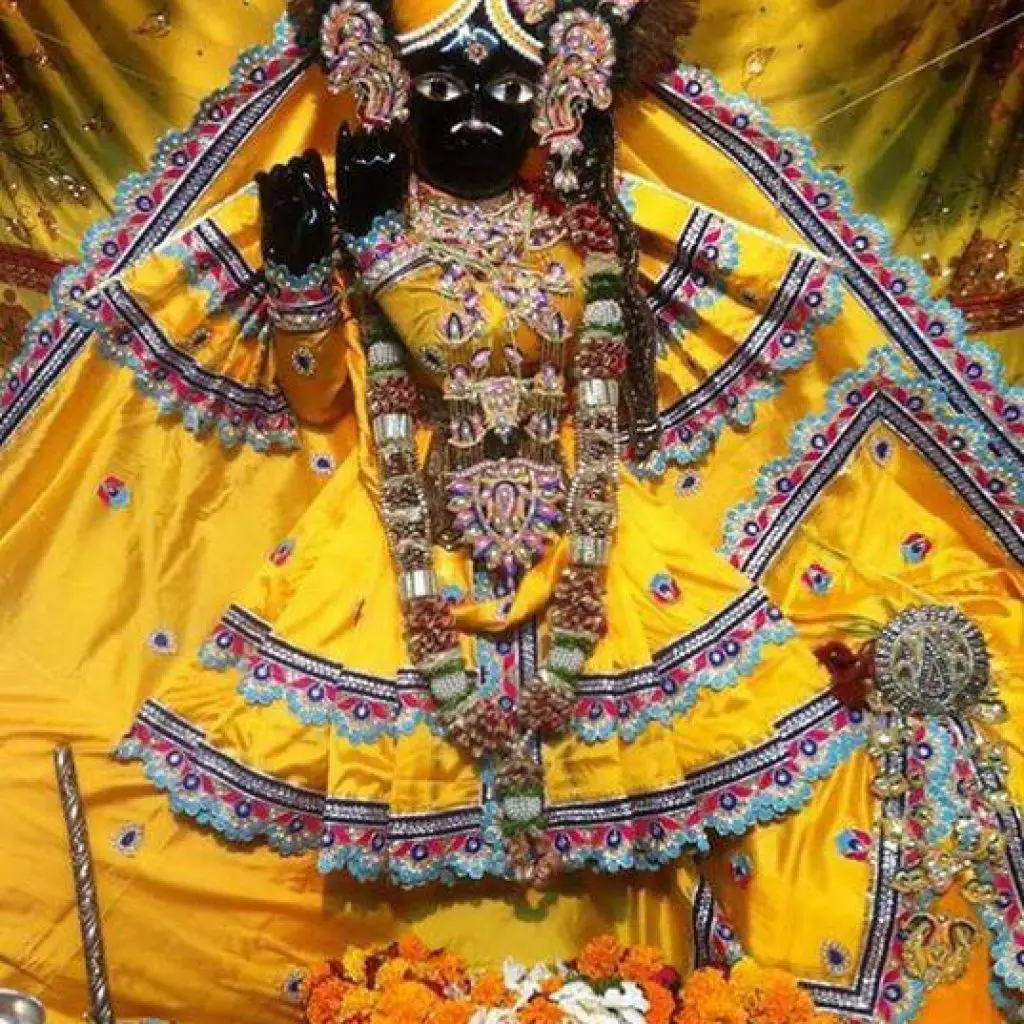
One of the most revered temples in Vrindavan, the Banke Bihari Temple is dedicated to Krishna in his child form. The temple’s architecture is relatively simple, but it is renowned for the captivating deity of Banke Bihari, which is adorned with a golden crown and garlands.
The temple attracts thousands of devotees daily, especially during special occasions like Janmashtami and Holi. The distinctive feature of the temple is its unique way of presenting Krishna’s image – a curtain is drawn across the deity at regular intervals, and devotees eagerly wait for a glimpse of the deity.
2. ISKCON Temple
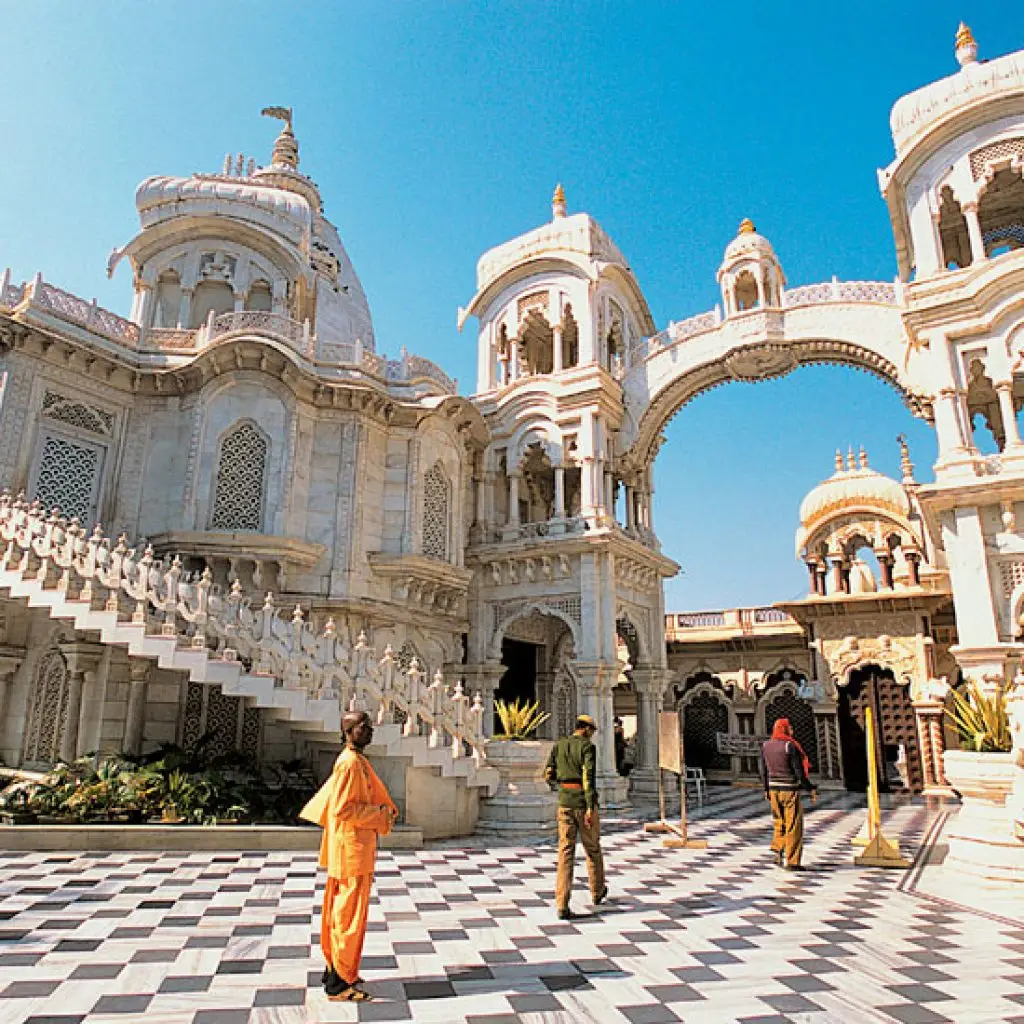
The ISKCON Temple, also known as the Krishna Balaram Mandir, is a significant spiritual center established by the International Society for Krishna Consciousness (ISKCON).
This magnificent white marble temple is dedicated to Radha Krishna and features vibrant daily rituals, kirtans (devotional singing), and discourses on Vedic scriptures.
The temple complex includes beautiful gardens and a guesthouse for devotees. The grandeur of the ISKCON Temple offers a serene and welcoming atmosphere for spiritual practice and reflection.
3. Prem Mandir

Built by Jagadguru Kripaluji Maharaj, Prem Mandir is a stunning temple constructed entirely from white marble. The temple is renowned for its intricate carvings depicting the life and teachings of Radha Krishna.
The evening light shows at Prem Mandir are particularly enchanting, as they bring the marble carvings to life with a symphony of lights and music. The temple’s serene environment and captivating beauty make it a must-visit for anyone exploring Vrindavan.
4. Radha Raman Temple
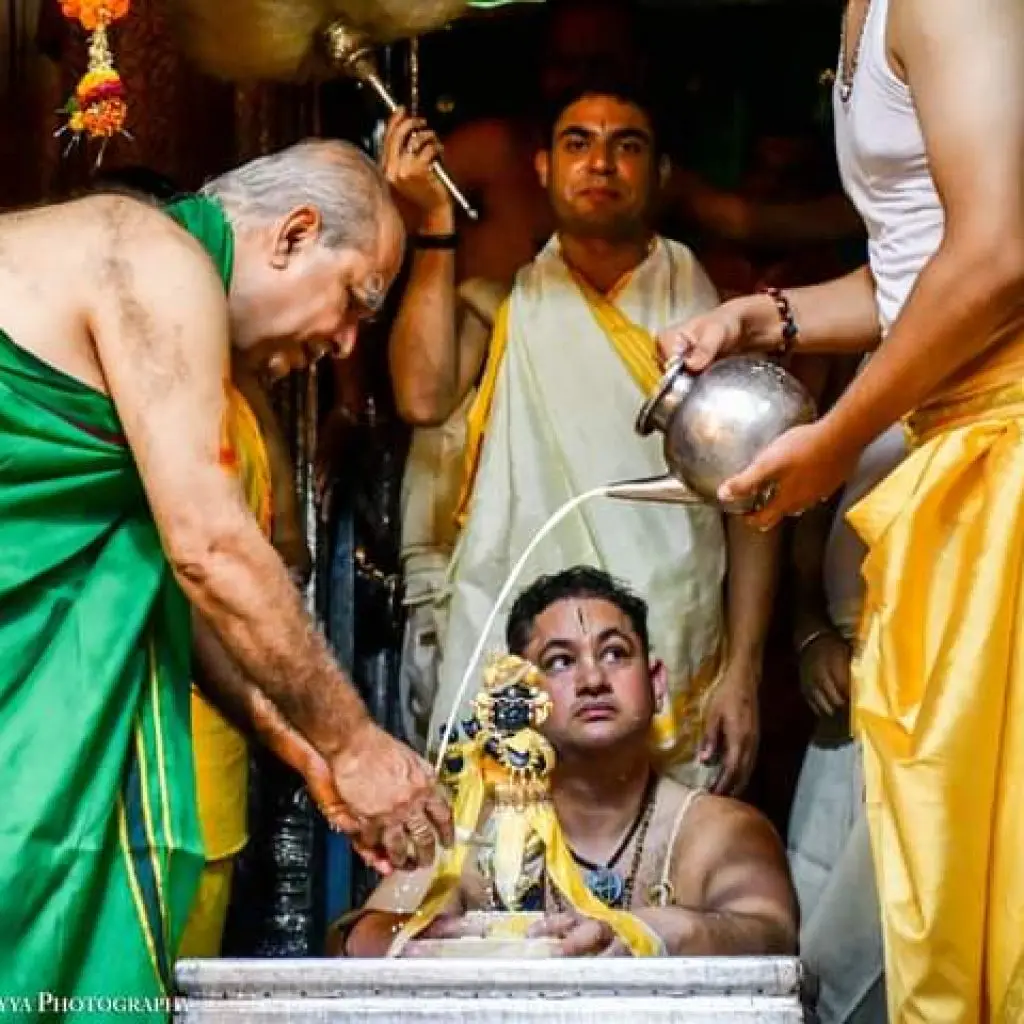
The Radha Raman Temple is home to Radha Raman, a self-manifested deity of Krishna. Founded in 1542 by Gopala Bhatta Goswami, the temple is known for its exquisite architecture and the devotion of its followers.
The deity of Radha Raman is said to have appeared on its own, making it a significant site for devotees seeking a direct connection with Krishna. The temple’s unique rituals and historical importance add to its spiritual allure.
5. Govind Dev Temple
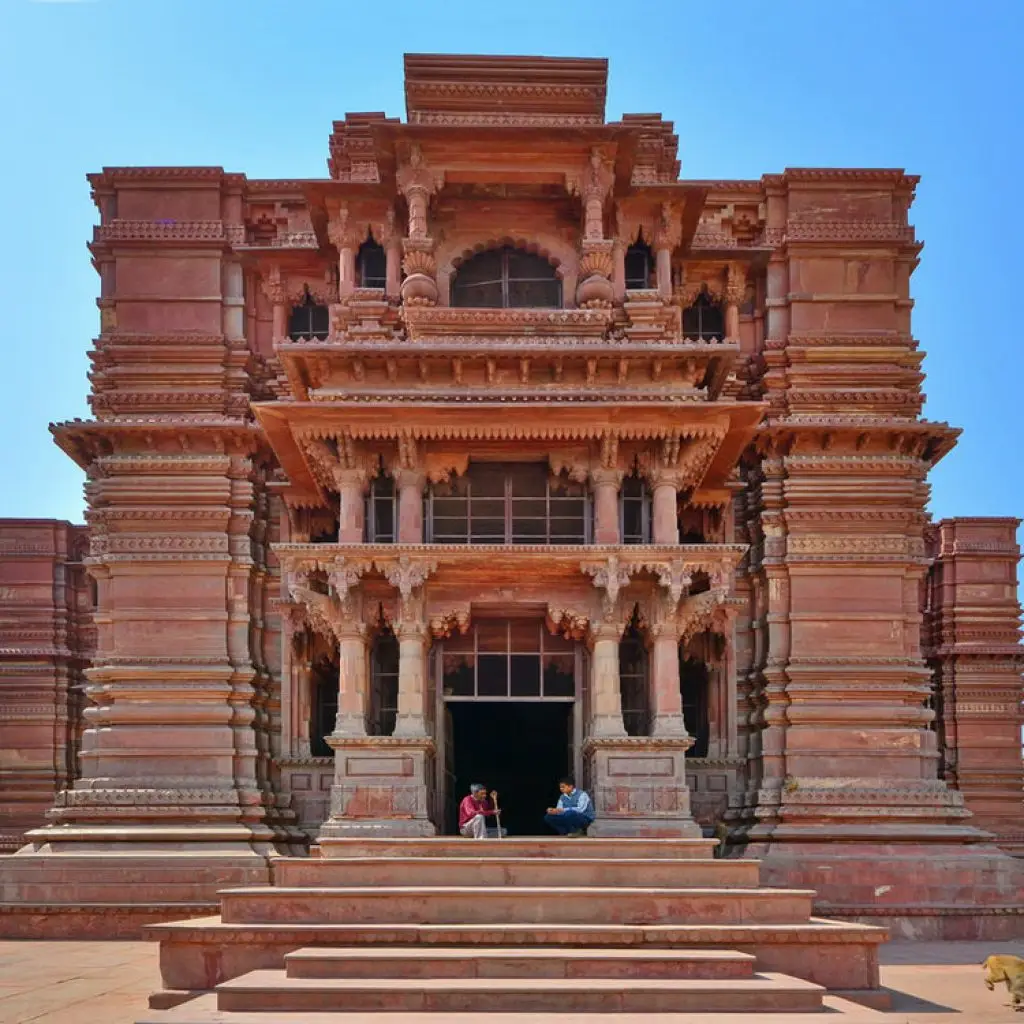
The Govind Dev Temple is one of the oldest and most historically significant temples in Vrindavan. Built in the 16th century by the Mughal Emperor Akbar, the temple is renowned for its stunning blend of Hindu and Mughal architectural styles.
The Shringar ceremony performed at this temple is a highlight for many visitors, showcasing the beautiful adornment of the deity Govind Dev with elaborate jewelry and garments.
The Krishna Janmabhoomi Temple in Mathura
A short distance from Vrindavan is Mathura, the birthplace of Lord Krishna. The Krishna Janmabhoomi Temple marks the sacred spot where Krishna was born to Devaki and Vasudeva. The temple complex includes the original dungeon where Krishna’s mother was imprisoned by the evil king Kansa.
Visitors can see the ancient walls of the dungeon and the sacred spot where Krishna took his first breath. The atmosphere at the temple is filled with devotion, as pilgrims sing hymns and offer prayers to honor Krishna’s divine birth.
Festivals and Celebrations
1. Holi
One of the most vibrant festivals celebrated in Vrindavan is Holi, also known as the Festival of Colors. During Holi, the city transforms into a riot of colors and joy as devotees throw colored powders and water at each other.
The festival commemorates the playful romance between Radha and Krishna and symbolizes the triumph of good over evil. The streets of Vrindavan come alive with music, dance, and exuberant celebrations, offering a unique and immersive experience for visitors.
2. Janmashtami
Janmashtami, the festival celebrating the birth of Lord Krishna, is another significant event in Vrindavan. The city is adorned with lights and decorations, and the temples are filled with devotional singing, dance performances, and reenactments of Krishna’s life. The night of Janmashtami is particularly special, as devotees gather to celebrate the exact moment of Krishna’s birth with fervor and devotion.
3. Radha Ashtami
Radha Ashtami is dedicated to Radha, Krishna’s beloved consort. The festival is marked by special rituals and ceremonies in honor of Radha’s divine presence. Temples across Vrindavan host elaborate celebrations, including devotional singing, dancing, and processions. The day is a time for devotees to express their love and devotion to Radha and seek her blessings.
Exploring the Natural Beauty of Vrindavan
1. Yamuna River
The Yamuna River holds a special place in the spiritual landscape of Vrindavan. The ghats (river banks) along the Yamuna are sacred sites for bathing, offering prayers, and performing rituals.
The tranquil environment of the riverbanks provides a peaceful setting for meditation and reflection. A boat ride on the Yamuna offers a unique perspective of the city and its spiritual landmarks.
2. Govardhan Hill
Govardhan Hill is a sacred site associated with the lifting of the hill by Lord Krishna to protect the villagers from torrential rains. The hill is a popular destination for pilgrims who perform a parikrama (circumambulation) around its base as a form of devotion.
The hill is surrounded by several sacred spots, including Kusum Sarovar and Manasi Ganga, which are worth exploring for their spiritual significance and natural beauty.
3. Barsana
Barsana, the birthplace of Radha, is known for its unique Lathmar Holi celebrations. The town is famous for the Radha Rani Temple and its picturesque landscapes.
The Lathmar Holi, a traditional celebration where women playfully hit men with sticks, is a vibrant and lively event that attracts many visitors. Barsana’s cultural heritage and festive atmosphere make it a charming destination.
4. Gokul
Gokul, the childhood home of Krishna, is another significant site near Vrindavan. The town is known for its numerous temples and sacred sites, including Nanda Bhavan (the home of Krishna’s foster parents), Raman Reti (a sacred sandbank), and Brahmand Ghat (a holy bathing spot). Gokul’s historical and spiritual significance adds to its appeal for pilgrims and visitors.
Practical Travel Tips
1. Accommodation Options
Vrindavan offers a range of accommodation options to suit every budget and preference. Budget-friendly guesthouses and dharamshalas provide essential comforts for pilgrims, while boutique hotels and resorts offer a more luxurious experience. For a seamless stay, consider booking your accommodation through trusted travel agencies like Vrindavan Packages.
2. Getting Around
Navigating Vrindavan is relatively easy with various transportation options. Rickshaws, taxis, and cycle rickshaws are readily available for getting around the narrow lanes of the city. For a more immersive experience, consider hiring a local guide who can provide insights into the city’s spiritual landmarks and cultural heritage.
3. Local Etiquette
When visiting temples and sacred sites, it is important to dress modestly and respect local customs. Remove your shoes before entering temple premises, and be mindful of the quiet and reverent atmosphere. Photography may be restricted in certain areas, so always check for permission before taking photos.
4. Health and Safety
Vrindavan is generally safe for travelers, but it is advisable to take basic precautions. Drink bottled water and avoid consuming street food if you have a sensitive stomach. Keep your belongings secure and be cautious of your surroundings, especially in crowded areas.
Centre of Culture and Learning
Vrindavan is the prominent centre for the dance form, ‘Raas Lila’ or the dance of divine devotion along with Rasiya songs forming the backdrop to the dances where the girls carry lamps on their heads and swing through various formations to the tune of myriad musical instruments.
The great music festival, ‘Swami Haridas Sammelan’ is organized in the memory of Swami Haridas. He was the Guru of the great singing maestro, Tansen. Tansen was one of the nine talented gems in the court of King Akbar. Thus, Vrindavan has unique distinction of being a seat of learning and cultural expansion of the mind and spirit both.
Geography of Vrindavan
Spread along the banks of the Yamuna River, Vrindavan is located just 12km to the north west of the other Brij dham, the holy land of Mathura. Geographically lying between 27.33 N and 77.41 E latitudes, Vrindavan, virtually is the heart of the sacred sphere of Brij also called the ‘Braj Mandal’. It is a plains area enjoying a well-wooded topography efficiently watered with the Yamuna rivers bounty
Vrindavan the City of Charity to Destitute Women
Vrindavan over the years has come to be called the city of Widows or Destitute women. This trend probably started a long time ago because widows were looked down upon as harbingers of misery and unhappiness and many a times were abandoned by their families. Often these women travelled to Vrindavan and found succor in some or the other of the hundreds of ashrams there. Presently there are more than 20,000 such women in the city.
There are a number of NGOs working for the welfare of these women and they try to accrue to them some of the benefits that are announced from time to time by the government or private donors and institutions.
Normally these women go from temple to temple singing devotional songs or ‘bhajans’ for which they are paid as less as Rs 10/- each and given a frugal meal.
Sight Seeing and Shopping
After having a round of the famous temples and attending the pujas it is necessary to look around for souvenirs to take home and to commemorate the visit. The best place is on the banks of the Yamuna itself. Here one may go in for some boating and look around.
The ghats and the Loi Bazar present a vast array of curios; one can pick up from seeds and beads to brassware and wooden handicrafts. The streets are full of beautiful workmanship and the tourists may have their fill of curious to pick up for their friends from the wares on display.
The Spiritual History of Mathura-Vrindavan
Gokul Mathura Vrindavan Holi tour is truly a spiritual experience, with numerous temples dedicated to Lord Krishna. Believed to be blessed by Krishna himself, Vrindavan is located about 15 km north of Mathura along the banks of the sacred Yamuna River.
This famous town is also well known where an early manifestation of the divine God was seen through the young Krishna’s play with gopis (milkmaids). With thousands of temples, each close, holding reverence to Lord Krishna, it’s no wonder over three million people pay their respects by visiting every year. Just imagine participating in the yearly pilgrimage and praying at these incredible temples – it’s easy to see why so many make it a part of their life journey.
Krishna Leela
Vrindavan is a holy city believed to have been home to young Lord Krishna’s divine leelas. It is seen as the epicenter of devotion for Vaishanavas and the site of many temples, ashrams, and seats of religious importance. Of these, some were created in the 16th century during the reign of Mughal ruler Akbar.
These temple complexes showcase the spiritual vibrations flowing through them and the glorious revival of Lord Krishna’s fame in Vrindavan. Pilgrims visit these remarkable places annually as part of their journey to enlightenment.
The historical significance behind Vrindavan Temples
Dwarka Mathura Vrindavan tour is full of ancient temples and is said to be Lord Krishna’s abode. One legendary temple, Banke Bihari temple, holds a special place and has an exciting history.
According to the legends, it all began when Haridas used to pay obeisance at one spot called Nidhivan before he started his day of song and meditation. Then, after his devotee’s persistent insistence, Haridas dug the ground.
On the fifth day after the new moon in February appeared, a luminous light containing Banke Bihari’s idol appeared. Bihari Panchami is celebrated in Vrindavan annually to honor this remarkable discovery.
Initially, the model was installed in Nidhivan, only to be later moved to its current residence at the Banke Bihari Temple once it was completed. Today many pilgrims flock to pay respect to this holy shrine throughout the year.
In 1864 A.D., a renowned temple of Lord Krishna was established in the holy city of Vrindavan. This place is known for its annual and seasonal spiritual events, which attract devotees from many parts of the world and country.
This particular temple worshiping Banke Bihari is quite distinct from other temples due to the rituals that it follows. In this particular temple, the devotees do not observe Mangla Aarti (morning prayers), as there are many superstitious beliefs about what mischievous activities take place in this temple during the night.
Conclusion
Vrindavan is more than just a destination; it’s a profound spiritual journey. The city’s rich tapestry of temples, sacred sites, and vibrant festivals offers a unique glimpse into the divine world of Lord Krishna. Whether you are a devoted pilgrim or a curious traveler, Vrindavan promises an experience that will touch your soul and leave a lasting impression.
Embark on this sacred journey and discover the magic of Vrindavan – a land where every moment is filled with spiritual significance and divine beauty.
FaQ
Q. What is Vrindavan known for?
Ans. Vrindavan is known for being a sacred city associated with Lord Krishna. It is revered as the playground of Krishna, with its ancient temples, serene ghats, and vibrant festivals reflecting the divine romance between Krishna and Radha.
Q. What is the historical significance of Vrindavan?
Ans.Vrindavan is believed to be the site where Lord Krishna spent his childhood, performing miracles and enchanting his devotees. The city’s spiritual landscape is deeply intertwined with Krishna’s life and legends.
Q. What are the major temples to visit in Vrindavan?
Ans. Banke Bihari Temple: Dedicated to Krishna in his child form.
ISKCON Temple: Also known as Krishna Balaram Mandir, a significant spiritual center established by ISKCON.
Prem Mandir: Known for its stunning white marble architecture and evening light shows.
Radha Raman Temple: Home to Radha Raman, a self-manifested deity of Krishna.
Govind Dev Temple: An old temple with a blend of Hindu and Mughal architectural styles.
Q. What festivals are celebrated in Vrindavan?
Ans. Holi: The Festival of Colors, celebrated with vibrant colors and joy.
Janmashtami: Celebrates the birth of Lord Krishna with decorations, devotional singing, and reenactments.
Radha Ashtami: Dedicated to Radha, featuring special rituals and ceremonies
Q. What natural sites should be explored in Vrindavan?
Ans.Yamuna River: Sacred river with ghats for bathing and reflection.
Govardhan Hill: Associated with Krishna’s divine act of lifting the hill.
Barsana: Known for its Lathmar Holi celebrations and Radha Rani Temple.
Gokul: Krishna’s childhood home with several sacred sites
Q. What practical travel tips should I consider for visiting Vrindavan?
Ans. Accommodation: Options range from budget guesthouses to luxury hotels. Book through trusted travel agencies for a seamless stay.
Getting Around: Use rickshaws, taxis, or cycle rickshaws. Hiring a local guide can enhance your experience.
Local Etiquette: Dress modestly, remove shoes before entering temples, and be mindful of photography restrictions.
Health and Safety: Drink bottled water, avoid street food if sensitive to it, and keep belongings secure.
Q. What is the cultural significance of Vrindavan?
Ans. Vrindavan is a center for the dance form ‘Raas Lila’ and is known for its cultural events like the ‘Swami Haridas Sammelan’, celebrating the legacy of Swami Haridas and Tansen.
Q. What is the geography of Vrindavan?
Ans. Located along the Yamuna River, about 12 km northwest of Mathura. The city is part of the Brij Mandal, characterized by its wooded topography and sacred landscapes.
Q.Why is Vrindavan known as the city of destitute women?
Ans. Historically, widows were often abandoned by their families and came to Vrindavan seeking refuge in ashrams. Today, there are over 20,000 such women in the city, with various NGOs working for their welfare.
Q. What shopping options are available in Vrindavan?
Ans. Souvenirs can be found on the banks of the Yamuna and Loi Bazar. Options include seeds, beads, brassware, and wooden handicrafts.
Q. What is the spiritual history of Mathura-Vrindavan?
Ans. Vrindavan, along with Mathura, is considered a pivotal site in Lord Krishna’s life. The area is known for its numerous temples and spiritual significance, with annual pilgrimages drawing millions of devotees.


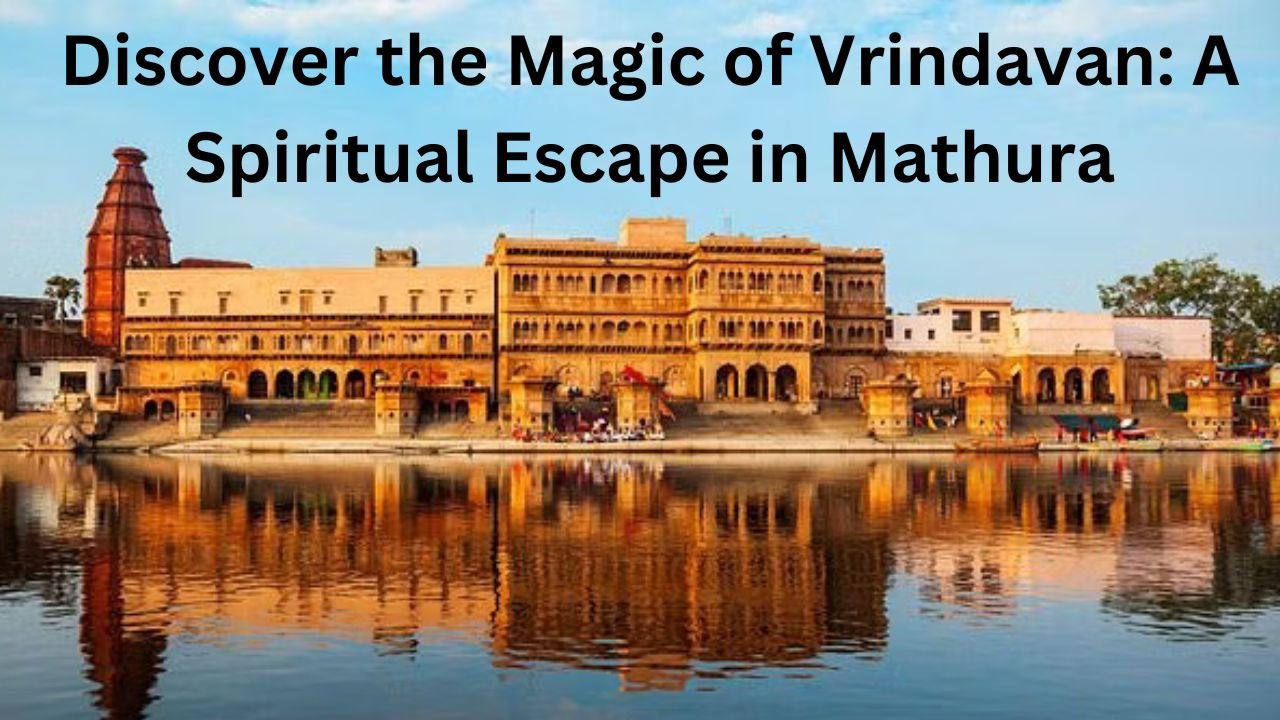
0 Comment